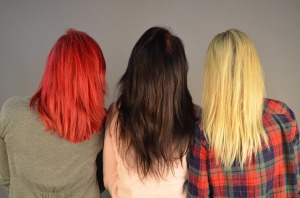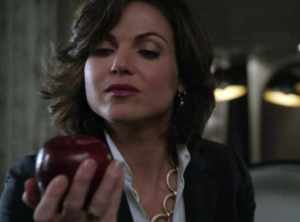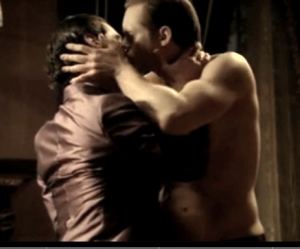A recent article in the British magazine, New Statesman, talked about how female characters in fictions are often depicted as strong – and there are some who are not too thrilled about that.
Not that being strong is bad thing, not at all! But as the article’s author, Sophia McDougall points out, strong female characters are just that: strong. They kick ass, either by martial arts or weapons, and have little room for weakness. I get it that this is likely the result of a backlash against such books as the Twilight series, where it’s heroine, Bella Swan, is doormat. There is also a desire to see female characters who are able to stand up for themselves and be their own person, because historically, society has preferred women to be passive.
But I always felt that the need for strong female characters has led to some of them being so strong, they almost cannot be related to. And the criteria for a strong female character was always the same: she kicks butt, has an in-your-face attitude, doesn’t desperately need a man in order to be complete, and hardly ever cries. To me, that’s a narrow definition on what it means to be strong.
Even more so, it doesn’t allow the female character to be more human, and as McDougall points out, it is not on par with male characters who are considered strong:
Are our best-loved male heroes Strong Male Characters? Is, say, Sherlock Holmes strong? In one sense, yes, of course. He faces danger and death in order to pursue justice. On the other hand, his physical strength is often unreliable – strong enough to bend an iron poker when on form, he nevertheless frequently has to rely on Watson to clobber his assailants, at least once because he’s neglected himself into a condition where he can’t even try to fight back. His mental and emotional resources also fluctuate. An addict and a depressive, he claims even his crime-fighting is a form of self-medication. Viewed this way, his willingness to place himself in physical danger might not be “strength” at all – it might be another form of self-destructiveness. Or on the other hand, perhaps his vulnerabilities make him all the stronger, as he succeeds in surviving and flourishing in spite of threats located within as well without.
It seems like male characters get to more fleshed out human beings while female characters are more one dimensional. They are either weak or super strong, with little room in between. It is kind of bizarre and frustrating that female characters are apparently not allowed to be fully human, with their quirks and flaws, along with their toughness and strong-will. To be honest, I feel the current criteria for a strong female character is almost a mockery of how strong a woman should be.

Click here for Flickr source
It also seems to say that in order for a woman to be strong, she needs to be more masculine. Let’s look at Game of Thrones and two of it’s very different female characters: the Stark sisters, Sansa and Arya. Many fans of the show and books love Arya because she is a tough girl willing to fight and kick butt. Basically, she is a tomboy. And she’s so popular, fans are naming their daughters after her.
On the other hand, her older sister, Sansa is frowned upon for being more ladylike, preferring dancing, singing and embroidery. Now, Sansa is not a well-liked character because she is naive and snooty. That I totally get. But she also not well-liked because she isn’t kicking butt like Arya would. I’ve read many comments online where fans complained about Sansa not physically fighting the Lannisters’, particularly the much hated King Joffrey. Many fans consider Sansa to be weak in this case.
I disagree very much because Sansa does possess enough inner strength to survive months as a prisoner at Kings Landing. I don’t know how many 14 year olds, or even grown adults, would handle watching their father unexpectedly lose their head, be tormented daily by their captors both physically and mentally, living in fear and losing hope of ever escaping their prison. The fact that she hasn’t gone insane is a sign that Sansa Stark is a strong female character – and she doesn’t need a sword or a sharp tongue to prove it.
Furthermore on McDougall’s article, she says there needs to be more equality between male and female characters. If male characters can be well-rounded with their strengths and weaknesses, why can’t their female counterparts?
She says:
What do I want instead of a Strong Female Character? I want a male:female character ratio of 1:1 instead of 3:1 on our screens. I want a wealth of complex female protagonists who can be either strong or weak or both or neither, because they are more than strength or weakness. Badass gunslingers and martial artists sure, but also interesting women who are shy and quiet and do, sometimes, put up with others’ shit because in real life there’s often no practical alternative. And besides heroines, I want to see women in as many and varied secondary and character roles as men: female sidekicks, mentors, comic relief, rivals, villains. I want not to be asked, when I try to sell a book about two girls, two boys and a genderless robot, if we couldn’t change one of those girls to a boy.
When I wrote The Dark Proposal, I set out to create a realistic character in Claire McCormick, and not go with the trends of a über-strong female character. First off, it wouldn’t have worked with my story idea at all. Secondly, I do like characters who are real. Mary Sues and kick-ass females bore me because that’s a standard that is too high for female characters. They kind of make me feel bad myself in a way.
Did I do my best creating a realistic human character in Claire? Let’s check out Sophia McDougall’s checklist:
I want her to be free to express herself: Sometimes Claire does, especially in the early stages in her relationship with Daniel Bertrand. But she also wanted to impress him and his friends, because they were an older, sophisticated group, so she doesn’t really act like herself in a few short scenes. But hey, a lot of people have done that, especially in their young, insecure days.
I want her to have meaningful, emotional relationships with other women: Absolutely! Claire roommates with her two best friends from college, Samantha and Monica. They are all close and go through a lot, particularly trying to live on their own while struggling to find jobs in a difficult world. Here’s a great thing: at times, they do have conversations that do not revolve around guys!
I want her to be weak sometimes: Oh yeah. Being a little insecure makes Claire overlook the warning signs that Daniel isn’t the nicest guy. She also gets so upset when he tells her he wants her to join him for eternity, that she loses rationale. Hey, desperation and fear can make many people lose their minds.
I want her to be strong in a way that isn’t about physical dominance or power: Yep. There are times when Claire does confront and stands up to Daniel. She also does not go insane with what she is faced with, which some people can end up as.
I want her to cry if she feels like crying: Oh does she!
I want her to ask for help: She does, she really tries.
I want her to be who she is: Claire is herself, in a way that shows she is someone trying to find herself as an adult, which as many of us can remember, isn’t the easiest journey to take.
Well, what do you know? Claire McCormick passed the test! She has her moments of weakness and of strength, as all human beings, male or female, do.
How about you? What is your take on how male and female characters are portrayed? Are you more for realistic characters, and are against any criteria? Sound it off!










